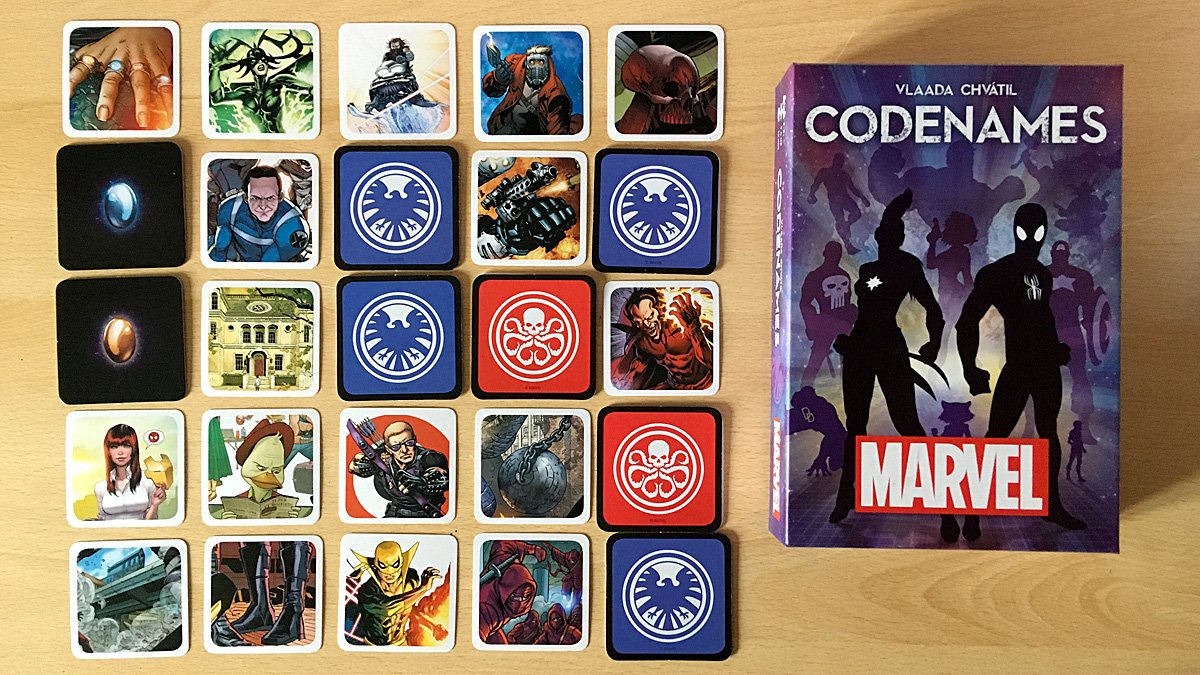
What is Codenames: Marvel?
Codenames: Marvel is a variant of the incredibly popular Codenames series of games, this time overlaid with a Marvel comics theme. In Codenames, players work in teams to identify all their cards from a grid before the opposing team identifies all theirs, while both teams hope to avoid the assassin. The game is recommended for two to eight players (four or more is preferable) aged nine and up and lasts around 15 minutes. Please note: this post contains affiliate links.
Components
- 200 Asset Cards
- 40 Key Cards
- 8 S.H.I.E.L.D. Cover Cards
- 8 Hydra Cover Cards
- 7 Neutral Cover Cards
- 1 Double Agent Card
- One Thanos/Assassin card
- 1 Card Stand
- Instructions
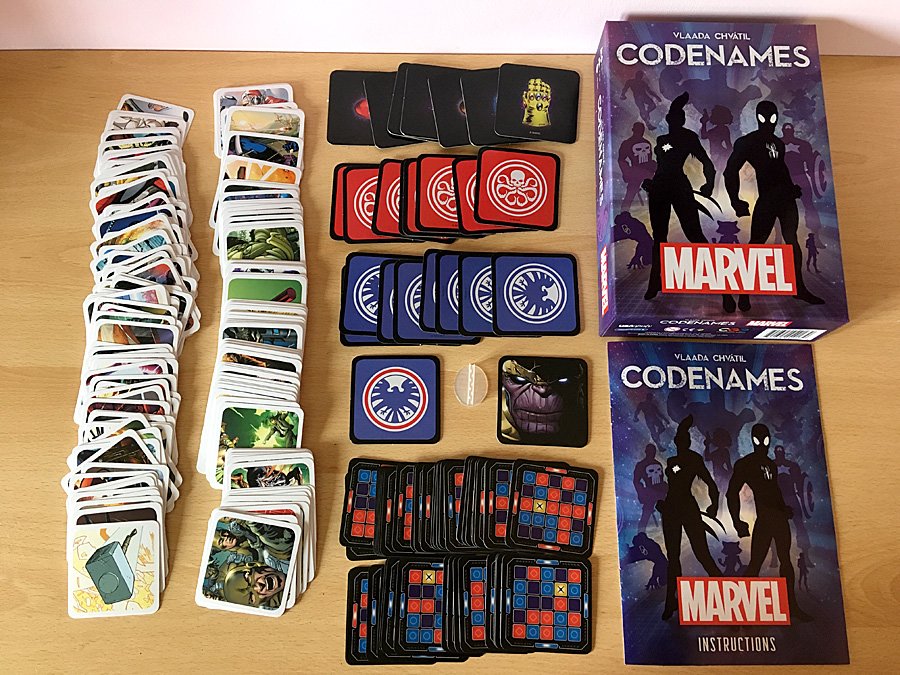
How Do You Play Codenames: Marvel?
Setup
A game of Codenames: Marvel begins by splitting all the players into two teams of roughly equal size (there are variant rules for two and three-player games in the instructions but here we’ll look at games for larger groups), one of these teams will be S.H.I.E.L.D. and the other team will be Hydra. Each team selects one player to be their Director. The two Directors sit at one end of the table, while all the other players (Agents) sit across from them on the opposite side.
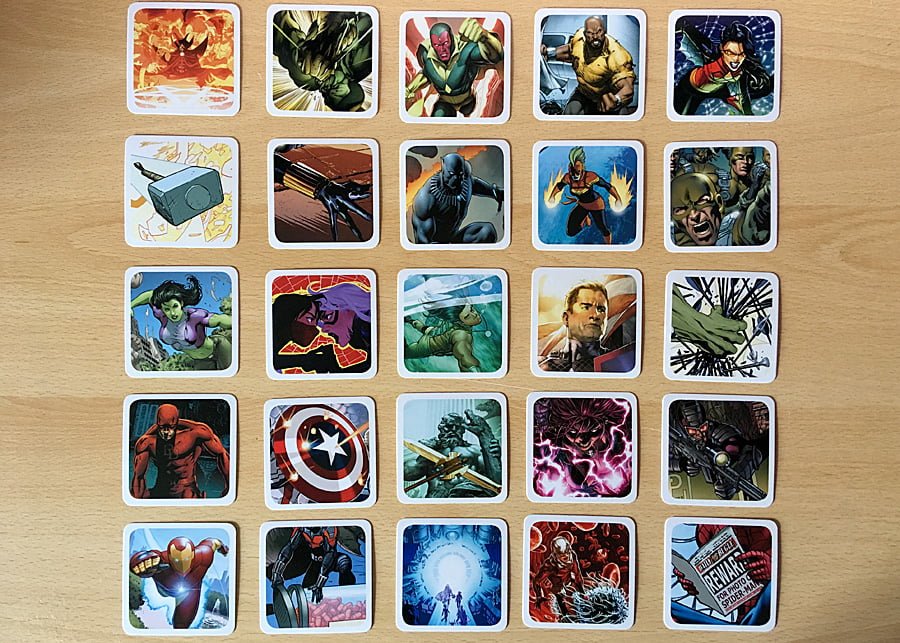
25 Asset cards are chosen at random and placed face-up on the table in a 5×5 grid with the pictures or words facing the Agents. One key card is chosen and placed in a stand so that it faces the Directors. Finally, the S.H.I.E.L.D., Hydra Cover Cards, and Neutral Cover Cards are placed nearby alongside the Thanos Assassin Card.
The game is now set up and ready to play.
Gameplay
In Codenames: Marvel, the S.H.I.E.L.D. and Hydra Directors are trying to get their teammates to point to the nine cards that match their team color before the other team successfully identify all their team’s cards, and both teams are trying to avoid the Assassin Card. Only the Directors know which Asset Cards are which by looking at the Key Card in front of them.
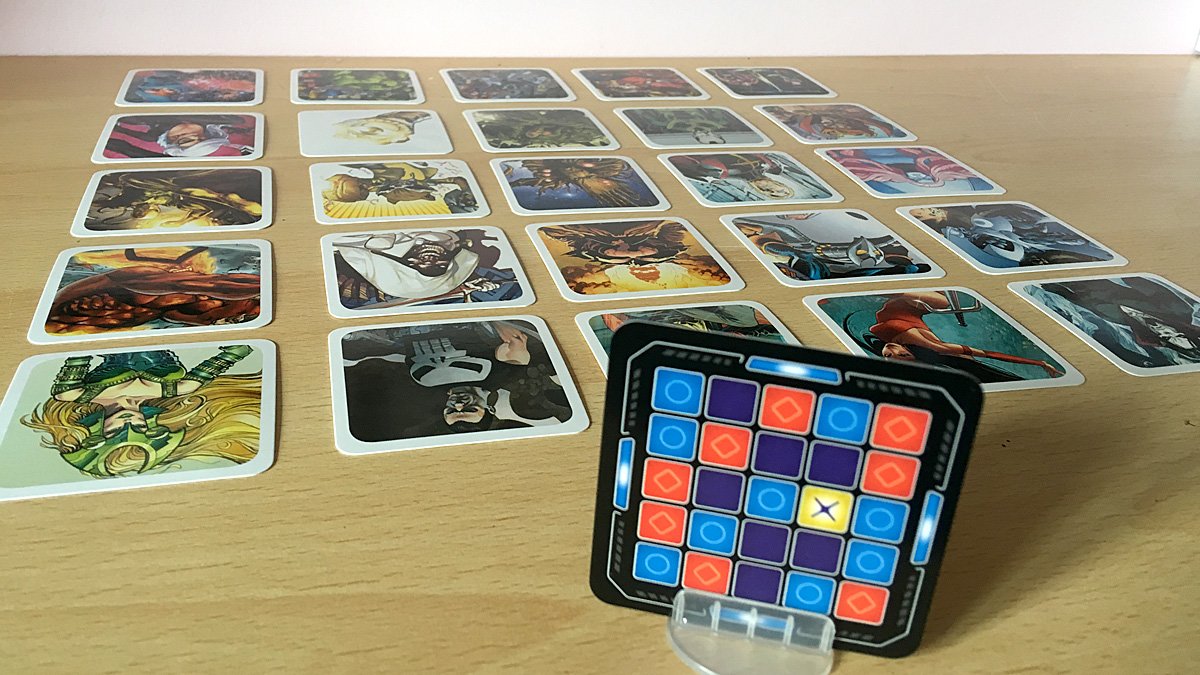
The Key Card shows a five by five grid which matches the grid of Asset Cards on the table. The Hydra Director wants to lead their teammates to identify the cards marked in red with a diamond, and the S.H.I.E.L.D. Director wants their teammates to identify the cards marked in light blue with a circle. The unmarked dark blue cards are neutral while the yellow card is the Assassin – if either team chooses that card, the other team immediately wins the game.
The Director of the team going first thinks up a clue for their team to lead them to one or more of the team’s Asset cards. Clues must be formed of a single word and a single number. The word should lead the team to certain cards while the number is the number of cards the word relates to, for example, in the example below, a clue such as Angry Three or Yellow Three could be given by a Director to point to all three cards.

The word given in the clue must be a single word without hyphens or spaces. Words that are visible on the table are not allowed and the word clue must be about the pictures on the cards, not their location on the table.
The Director is not allowed to give any further clues, nor can they use body language to indicate certain cards or areas of the grid, however, they are allowed to spell out the word in their clue if it is ambiguous (e.g. bare or bear). Agents are advised to avoid eye-contact with the Director once a clue is given to avoid accusations from the opposite team that further information is being relayed.
The team then discusses between themselves which card or cards they believe the clue relates to. Once they have agreed on which Asset Card they want to select, one team member reaches out and places a finger onto the chosen card to clearly identify it.
- If the team selects an Asset Card which belongs to them, the Director covers it with one of their team’s Cover Cards. The team may then guess again up to once more than the number in their Director’s clue. For example, if the clue was Red Two, the team may make up to three guesses in a row if they select their team’s cards.
- If the team selects an Asset Card which belongs to the opposing team, the Director covers it with the opposing team’s Cover Card and the team’s go ends.
- If the team selects a neutral Asset Card, the Director covers it with a Neutral Cover Card and the team’s go ends.
- If the team selects the Assassin Card, the Director covers it with the Assassin Cover Card and the opposing team immediately wins the game.
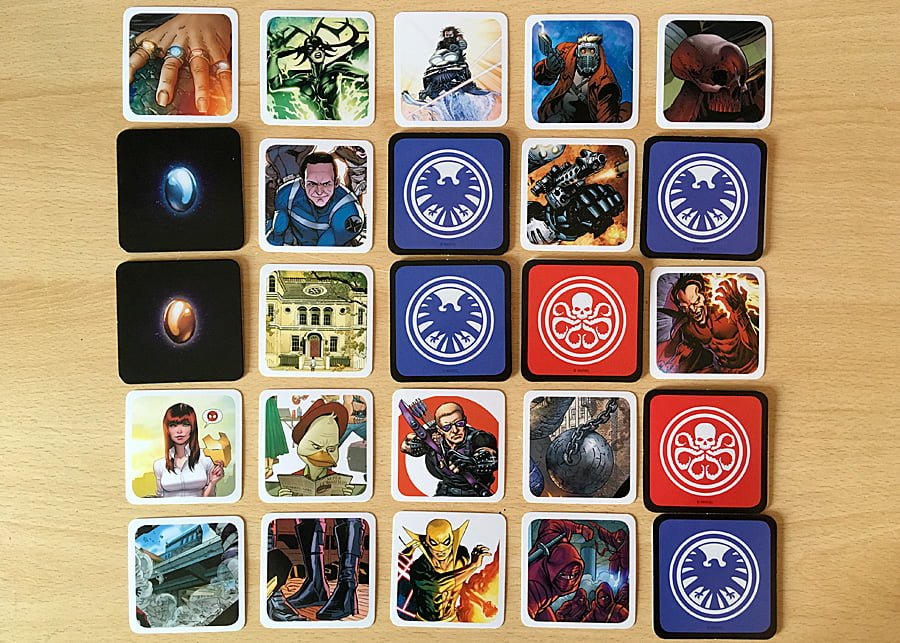
Play continues with teams taking it in turns to give clues and select cards until either one team has all nine of their Asset Cards covered, or a team picks the Assassin Asset Card.
Should I Buy Codenames: Marvel?
First, let’s say that if you’re already a fan of the Codenames series, you’ll probably enjoy this game too. The gameplay is mostly the same with a few changes, however, these are largely aesthetic and so the reverse is also true, those who haven’t enjoyed previous incarnations of Codenames are little to be won over by this version unless the Marvel theme alone is enough to sway them.
Codenames: Marvel is a fun party game that will get everyone talking and doesn’t take too long to play at around 15 minutes after setup. The team format means the game can comfortably accommodate large groups as well, this is always welcome as it can be difficult to find good games that can be played by more than five people.
As for the Marvel theme, you don’t need to know your Marvel comics and characters to play but I will say that the more you do know, the easier you will find it. This comic book focus means that many cards depict people, places, and objects which won’t be familiar to Marvel fans who have only watched the films. However, with 200 Asset Cards in the box, it wouldn’t be difficult to create an (ever-expanding) MCU only deck if you wanted, or these can be left in for an extra challenge. Because the game is very much themed toward the comics, with artwork to match, parents might want to note that some of the female characters are portrayed in outfits that leave little to the imagination.
We enjoyed playing Codenames: Marvel but found it less enjoyable than Codenames: Duet. It’s not a party game that we’ll be getting out often, but comic book fans will get a kick out of this version.
GeekMom received a copy of this game for review purposes.


